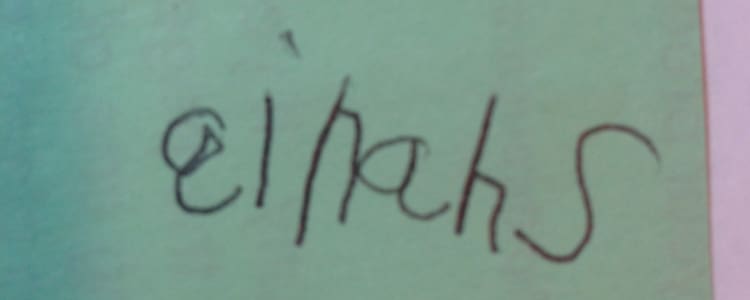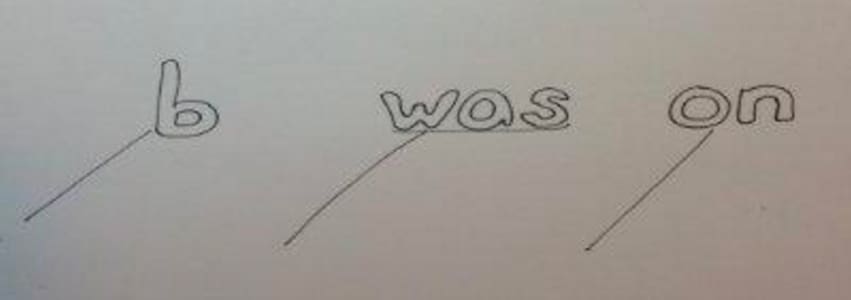The Dyslexic Perspective
Learn about Dyslexia in my new book Now YOU See It: The Heart of Dyslexia – by Karin R. Merkle
Click HERE for more information
Do people with dyslexia see things backwards?
Contrary to popular belief, people with dyslexia do not see things backwards. I can see why we once thought this since some kids would get the letters b and d mixed up, and they might see the word was and say “saw” or see the word on and say “no”.
I have seen several students write their names from right to left, like this young girl, Shania:

Breaking It Down
The reason directional errors occur is not a vision thing at all, but rather a processing or perception issue. The best way to explain this is with a few examples.
Example #1: When I was reporting for jury duty, I received a parking pass with the instructions, “Place parking pass in the lower right of your windshield.” Did that mean my lower right as I sat in my car, or the lower right as I looked at my windshield from the outside? I had to make my best guess.
Example #2: Have you ever attended a kid’s school concert and wanted to know where your kid would be standing so you could get a good seat? “I’m on the left side of the risers,” your kid tells you. You walk in and find a seat to your left, only to find out that your kid meant his left, as he’s standing on the stage.
Example #3 Look at the pictures below.

What do you see in the first picture? How about the second one? What about the rest of the pictures? If you said “a banana”, you are correct, no matter which way it’s facing.
Example #4: Imagine that you are at a parade. You are watching the parade from one side of the street and your friend is across the street watching from the other side. Down the street comes a float with a large balloon shaped like a super hero.
“Superman!” you say.
“Superman!” says your friend.
“Superman!” says a kid watching while he hangs upside down from a tree branch.
You are all correct.
Later, along comes a float with a large balloon shaped like a letter.
“b!” you say.
“d!” says your friend.
“p!” says the kid in the tree.
Later, along comes a float with a large balloon shaped like a word.
“was!” you say.
“saw!”says your friend.
“Sam!” says the kid in the tree.
Is only one parade-watcher correct?

Is only one parade-watcher correct?
My point is that if letters, words, and shapes are 3-dimensional (like a balloon) rather than 2-dimensional (like on paper), the letter or word could qualify as different things, depending upon the perception of the viewer.
The 3-Dimensional Point of View
I’ve learned that people with dyslexia do not naturally process written words or accomplish tasks in a linear way, meaning that they do not work their way from left to right and top to bottom. They often see “the big picture” in real-life problems and approach written words in the same manner.
Unless taught differently, people with dyslexia tend to take in a whole word as one big shape (from all angles), rather than processing its pieces starting from the left. This can be a problem also when students try to write a letter or number. It’s like they are “drawing a picture” of that letter’s shape and its orientation doesn’t seem important. This can also make it hard to learn the difference between left and right, how to tell time on a clock with hands, and how to read maps.
I believe that people with dyslexia use their 3-D, spatial awareness strength to try to help with their weakness in recognizing those flat, 2-D squiggles on a page. I can just imagine students pulling those letters or words up off the page in their minds and perceiving them “Matrix (the movie)-style”, where the shape is in mid-air and viewed from all angles. When they see the letter b on a page, their eyes see the same shape as everyone else. They may correctly say “b”, but may just as easily say “d” or “p” since all of those letters are the same shape from a 3-dimensional point of view.
Many people with dyslexia have a poor memory for flat 2-dimensional shapes (such as words on a page), but they have very good spatial, 3-dimensional awareness for things like sports, Legos, Minecraft, architecture, landscaping, and design.
